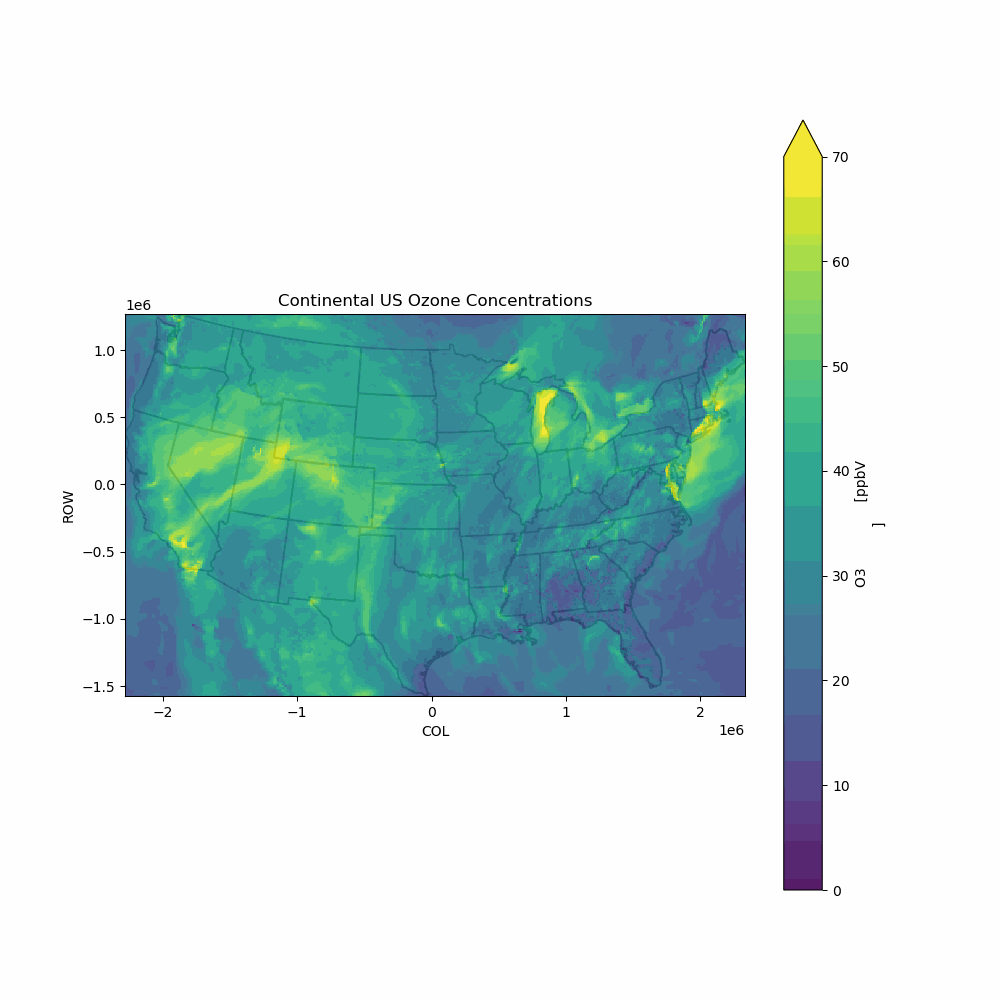CMAQ Modeling of Tropospheric Ozone
The Community Multiscale Air Quality (CMAQ) model is a USEPA air quality modeling system that simulates the distribution of multiple air pollutants in the atmosphere using a finite difference approach to solve equations that govern the transport and transformation of air pollutants. In this project, we simulate a 16-day air pollution simulation using the CMAQ model from July 8 to July 25, 2016 with a focus on analyzing the data from July 18 to July 25, 2016.
CMAQ model version 5.3.3 was used with specific parameters including offline dust, no lightning NOx, no bi-directional NH3, offline emission, and limited diagnostics for the simulation.
The CMAQ model used in this project was run using the Savio high-performance computing cluster at the University of California, Berkeley. The cluster consists of thousands of computing nodes with high-speed interconnects and fast storage, allowing for large-scale scientific computing. The job was submitted using the Slurm workload manager with specific configurations such as 8 nodes, 16 tasks per node, and a time limit of 24 hours. The model was loaded with the intel/2018.1.163 and openmpi/2.0.2-intel modules. It is worth noting that the simulation took about 40 hours to run in two batches.
CMAQ Ozone run: July 18-23, 2016
CMAQ Model Performance
Two locations with EPA AQS monitoring locations in the San Joaquin Valley were selected as projects sites to validate model performance. Stockton-Hazleton and Tracy Airport monitoring sites both reported ozone levels above USEPA NAAQS, and as such, investigating CMAQ models performance at these grid cells provides important forecasting resources to impacted communities.
CMAQ performs extremely well at Stockton-Hazleton, whereas there is only moderately good performance at Tracy-Airport. Tracy Airport is located near the Coast Range foothills, and resulting wind field and mixing may exist at scales below CMAQs grid resolution. Complex terrain is well documented to relate to poor model performance. See paper below for more discussion.
Baker, K.R., Simon, H., Kelly, J.T., 2011. Challenges to modeling “Cold Pool” meteo-
rology associated with high pollution episodes. Environmental Science &
Technology 45, 7118e7119
Final Thoughts
A last look at California ozone concentrations with San Joaquin Air district highlighted for visualization purposes.
A special thanks to collaborators Mohit Dubey and Lucas Rojas Mendoza, and to Dr. Cesunica Ivey at UC Berkeley Department of Civil and Environmental Engineering. Project completed Spring 2023 for UC Berkeley course CEE 218C: Air Quality Modeling.
CMAQs model performance meets the target goals of [-0.3 < MFB < 0.3] and [MFE < 0.5] at both selected AQS locations (See paper below). Therefore we find CMAQs model can be a useful tool for forecasted air quality events for communities in the northern San Joaquin Valley.
Simon, H., Baker, K. R., & Phillips, S. (2012). Compilation and interpretation of photochemical model performance statistics published between 2006 and 2012. Atmospheric Environment, 61, 124-139. doi: 10.1016/j.atmosenv.2012.07.012.





